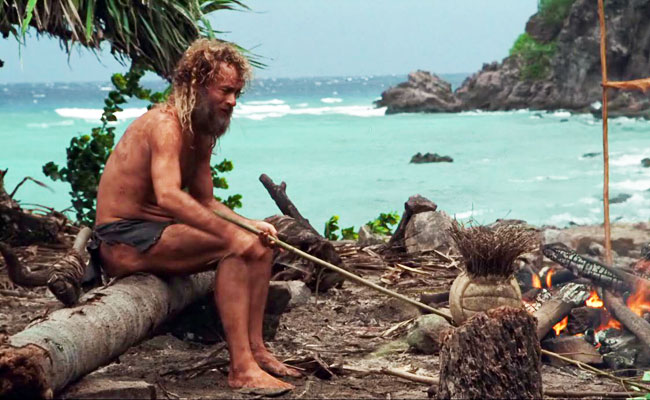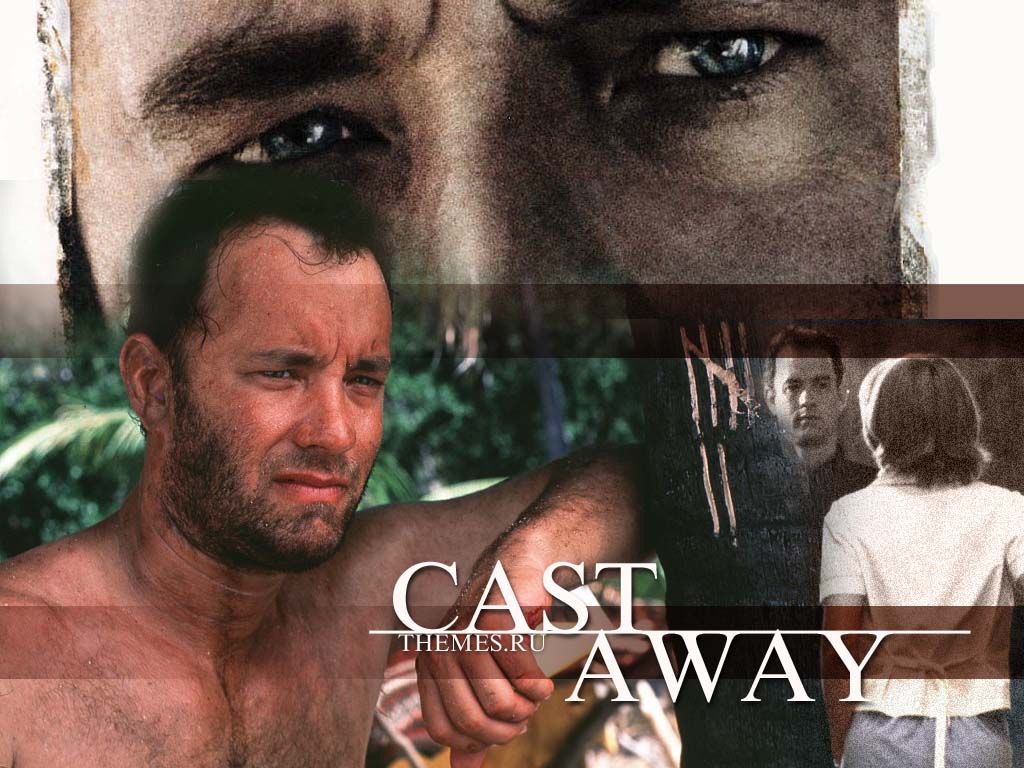

A storm nearly rips his raft to pieces and he loses his only friend, Wilson.

Once he completes it he stocks it with supplies and, with the aid of a sail he put on it, gets past the surf and out into the ocean. Still intent on eventually escaping, Noland begins piecing together a raft from found items and things that wash up on shore. Four years pass during which he survives on the island, becoming a changed man adapted to his surroundings. He later puts a bloody hand print on the ball, starts calling it Wilson, and begins having conversations with it. Noland's first attempt at making fire is a failure that leaves him injured and angry and, rampaging, he throws around several of the items from the packages including a Wilson brand volleyball. He opens the packages that came ashore and finds several useful items though he leaves a single decorated package untouched. When the raft can't make it past the surf, he tries to find shelter and food and water on the island but fails initially. Noland buries the body and then tries to signal for a rescue and resolves to make an escape attempt on his raft. Packages from the downed cargo plane wash up on shore as well as one of the dead plane pilots. The only survivor, he takes a life raft and is washed up on a deserted island in the South Pacific. He leaves a family gathering on Christmas to an assignment in Malaysia only to find himself in a plane crash. He wants to marry longtime girlfriend Kelly Frears, but his work schedule continually disrupts their plans. It is an exceptional achievement for director and scorist alike and a fitting culmination to this summary of their collaboration.Federal Express systems analyst Chuck Noland finds that he is so busy with his job traveling around the world that he rarely has time for his real life. The excerpt included on the CD is the seven-minute end title theme, which boldly intersperses the music with several long segments of softly crashing waves. Slow, steady, characterized by long notes and unusual moments of silence, it opens emotional floodgates in ways that a more expressive piece would not. Silvestri's theme isn't introduced until Hanks finally escapes from his island, and then it is stunning in large part because of the simplicity of the melody. Both Zemeckis and Silvestri demonstrate remarkable restraint in scoring Cast Away, with the director choosing to withhold music from several scenes in the film - particularly those that feature strandee Tom Hanks staring longingly at photographs of Helen Hunt - that would have been scored with manipulative music in almost any other movie. But the most impressive piece in the collection is the title track. The equally sentimental piano balladry from Contact shows the composer repeating himself unnecessarily, but his versatility continues to impress throughout the rest of the album - even during the unlistenable excerpt from Silvestri's Bernard Hermann-wannabe effort for What Lies Beneath. The collection's other highlights include the '40s jazz swagger of Who Framed Roger Rabbit?, the steady Western power of the cowboy picture Back to the Future, Part III, and the sentimental piano balladry of Silvestri's sole Oscar nominee, Forrest Gump.

The collection begins with ludicrously outdated '80s lite jazz nonsense from Romancing the Stone before moving mercifully on to the John Williams-esque blockbuster brashness of Back to the Future, which remains Silvestri's most famous and memorable score. The album features excerpts from all ten of the Zemeckis/Silvestri pictures, and it reveals the breadth and variety in both style and quality that has characterized the composer's career. Consequently, the Cast Away CD is not so much a soundtrack album for that film as a retrospective of Silvestri's 16-year collaboration with director Zemeckis. But the brevity of Alan Silvestri's score must have been a disappointment for the folks at Varese Sarabande, who were left without enough material for a full-length soundtrack album. Which is actually a very effective choice for a film about a life stripped to its bare essentials. At least, not for the first two thirds of the movie. The most striking thing about the music in Robert Zemeckis' desert-island fantasy Cast Away is that there isn't any.


 0 kommentar(er)
0 kommentar(er)
